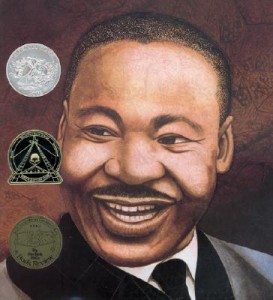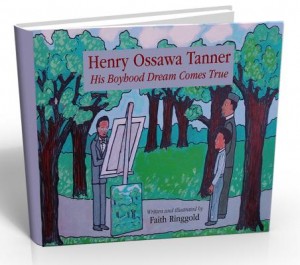We spoke with author Sarah Sullivan about her journey from early draft to final revision and the aha moment that eventually became the evocative debut, All That’s Missing (Candlewick Press), set to hit bookstore shelves October 8th.
*** Thanks to all who entered this month’s giveaway! Congratulations to Colleen Malley, winner of a signed copy of All That’s Missing!
When my novel was still an unformed mass of keystrokes, I attended a writer’s retreat during which there was a memorable and rather heated discussion involving the absence of books which included characters of different races, in which issues of racial prejudice or inequality or social justice were not the primary focus of the plot. Where were the books that reflected our richly diverse society, where children are blessedly color-blind to an extent we only dared to dream possible in earlier generations?
While all agreed that it remains important to tell the stories of injustice and prejudice, wasn’t it time to reflect a world where diversity was simply a given, where African-American, Latino, Asian-American, Muslim, Hindu, Native American and Caucasian children, as well as children of multiple ethnicities, encounter the usual problems and joys of growing up in towns and cities and rural areas across the United States?
Well, wasn’t it time?
The discussion from the writing retreat haunted me. I needed to pay attention. I came home and went to my weekly read-aloud session where, for more than ten years, I’d been going into a second grade classroom in a racially diverse school and sharing picture books. On this visit, I read Martin’s Big Words and, when it became obvious that the students had no idea how things had been between black and white people during the Civil Rights Movement, again I knew I had to rethink my story. These students were way ahead of me. It was time for me to catch up.

As a country, we were on the verge of electing our first African-American president. I wanted to reach for a world where children of different races and, children whose parents came from diverse heritages, exist as part of a community and not as some object of controversy. Of course, there would be a history of racial prejudice because, after all, that’s the tragic truth of our history and my story was set in an area of the country that had seen its share of racial troubles. But these second graders had given me both hope and courage to reach for a better world.
I completely re-wrote the second half of my book. The characters came alive in my head and the story took shape. My protagonist, Arlo, becomes friends with a girl named Maywood whose parents own a small independent bookstore in the town where his grandmother lives. Maywood’s mother, who is an art history professor at a nearby college, is African-American. Her father, who runs the book store, is white. Her two grandmothers, one white, one African American, are strong and important influences in her life. Maywood also has an ancestor who was a famous African American artist in the early twentieth century, a fictional character, though informed by the life of the real artist, Henry Ossawa Tanner.
In creating my fictional artist, I researched the life of Henry Ossawa Tanner. Like my fictional artist, Tanner was an expatriate who lived most of his life in France in order to escape racism in the  United States. He is the first African American artist whose work was purchased for the White House collection. (The Clintons acquired the painting.) Too little is known about him in the United States, but with a recent exhibit organized by the Pennsylvania Academy of Fine Arts in Philadelphia and a catalogue published to accompany it, I hope that will change. An Author’s Note at the end of my book calls attention to his work.
United States. He is the first African American artist whose work was purchased for the White House collection. (The Clintons acquired the painting.) Too little is known about him in the United States, but with a recent exhibit organized by the Pennsylvania Academy of Fine Arts in Philadelphia and a catalogue published to accompany it, I hope that will change. An Author’s Note at the end of my book calls attention to his work.
I don’t think I could have found my way to Maywood’s story if I had not been a part of that writing retreat discussion. Any time I tried to write about race before that, I became bogged down in the politics of bigotry and lost sight of the humanity of my characters. Talking about the issues in a public forum freed me in a way nothing else had and I remain grateful to have been a part of that conversation.
How, then, do we address the imperative to look forward to a more balanced future against the need to recognize injustice and lack of opportunity where it still occurs? And, don’t we need to offer hope of something better for young readers? There are no easy answers. That much is certain. I guess one acknowledges which part of the puzzle she’s putting under the microscope and tries to be as honest and fair as possible.
Thank you for the opportunity to talk about this. I love ReaderKidZ!
And thank you, Sarah, for sharing a piece of the “story behind the story.”
Would you like to win a signed copy of All That’s Missing? To enter your name in the drawing, be sure to leave a comment or contact us at readerkidz at readerkidz dot com. Include “ALL THAT’S MISSING Giveaway” in the subject line.











Congratulations to Sarah on her first novel! I can’t wait to read it!
I’m so excited about this book, Sarah. And your comments about the diversity discussion that led to a massive revision has made me think about a middle grade I’m contemplating. You may well have given me the missing link. In which case, I thank you many times over.
Stephanie
This is one terrific book — don’t miss it, read it, several times. You are in for a treat!
The writers’ retreat sounds so inspiring. I am fascinated by the way you researched the life of the real artist and then fictionalized. Thanks for sharing this process.
Can’t wait to share it with the kids. Thanks to Stephanie Greene for the recommendation.
This book sound amazing! Please enter me in the drawing for the giveaway.
Thanks,
Karen J
Congrats on this book, Sarah. And thank you for your willingness to make your characters more diverse.
Thanks to all who entered this month’s giveaway! Congratulations to Colleen Malley, winner of a signed copy of All That’s Missing!